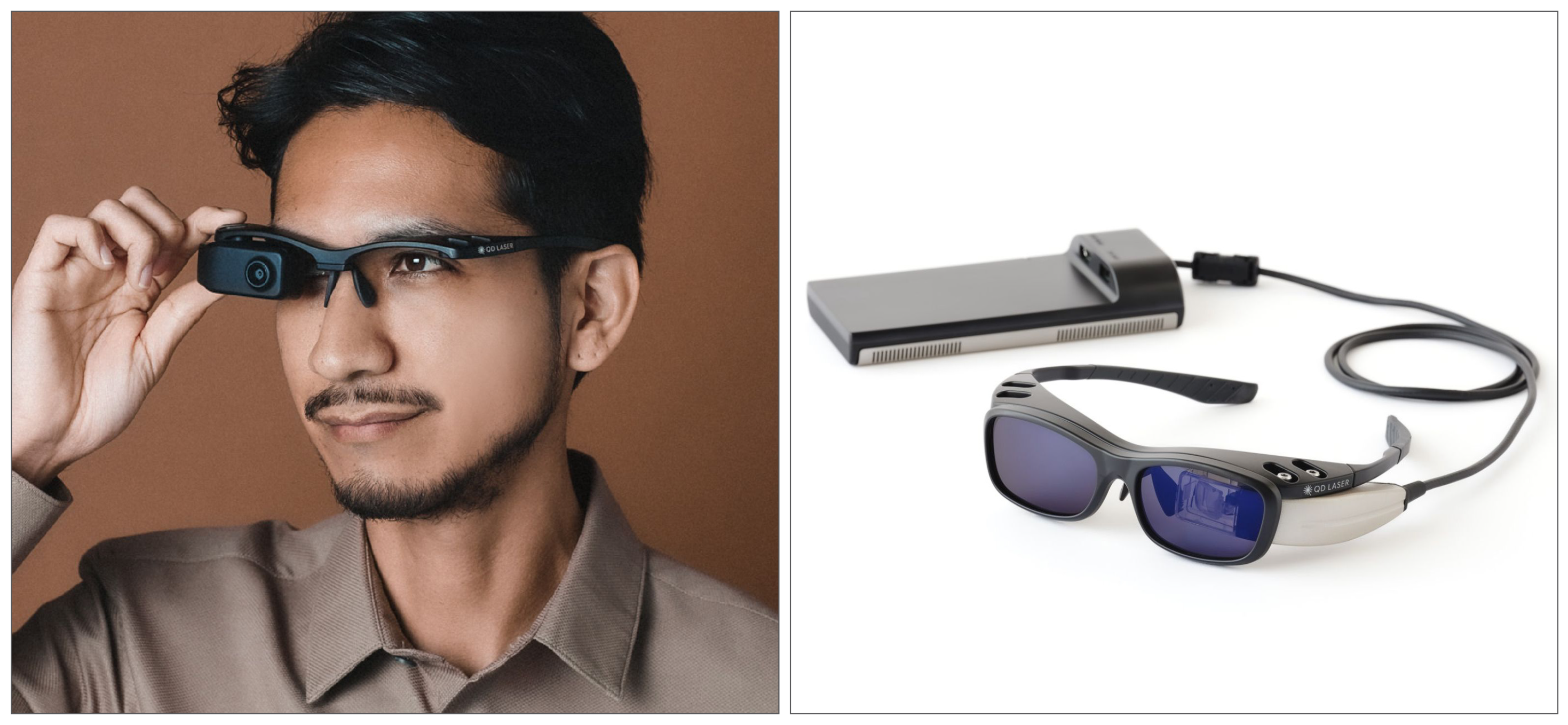 |
| By bypassing the anterior segment and sending images directly to the retina, the Retissa device enhanced visual acuity and ability to perform daily tasks in a small cohort of 21 patients with corneal disease-related visual impairment. Photo: QD Laser. Click image to enlarge. |
Patients with corneal diseases who suffer from vision impairment despite having a healthy retina and optic pathway are often given low vision aids that help magnify and enhance the contrast of images. While these devices can improve patients’ ability to do certain tasks such as reading, they can’t adequately assist with other daily tasks such as face recognition and cooking. In search of a better solution, researchers have found in recent decades that incorporating a low-energy diode laser into low vision aids can provide an image directly to the retina, bypassing the anterior segment.
A recent study tested a wearable form of this technology, described by the manufacturer as “laser eyewear,” on 21 patients with visual impairment due to corneal diseases They found that for all patients, the retinal projection glasses resulted in enhanced visual acuity (VA).
The device, called Retissa, is manufactured by Japanese company QD Laser and is available in some international markets but not yet the United States.
The corneal disease patients were between 25 and 69 years old, had visual impairment of 0.7 logMAR or worse and did not have any retinal disorders or other comorbidities affecting vision. At baseline, all standard VA measurements were taken. Assessments of reading speed, vision-related quality of life (QoL) and capacity to carry out daily tasks were also done at baseline and two subsequent visits after a home phase with and without the device. Subjects were instructed to wear the glasses for two to eight hours per day during the home phase. To evaluate the safety of the device, all patients completed an ophthalmological exam including SD-OCT or full-field electroretinography six weeks after the last use, the findings of which were compared to baseline. Four participants also completed a subsequent 12-month follow-up.
The results showed that the distance vision of the cohort improved by 0.43 logMAR using the device compared to best correction. Near vision also improved by 0.47 logMAR with the use of the device.
Using the 2x magnification mode on the glasses, VA improved by an average of 0.66 logMAR compared to best correction. Use of the device “enabled a significantly higher number of patients to read a text with newspaper print size in comparison to a conventional optical magnifier (both 2x magnification),” the researchers reported in their paper, published last week in Ophthalmology. They add, “While only four out of 21 participants were able to read with best correction, 17 out of 21 were able to read with laser eyewear.”
The enhanced distance and near vision provided by the Retissa device also appeared to have a positive impact on patient’s vision-related QoL. Each of the 17 subjects who completed all visits reported significantly improved QoL with device wear.
With regards to safety, the researchers note in their paper that, “As anticipated, no laser-induced damages were observed six weeks after the last use and after our long-term follow-up study, which involved using the laser eyewear device for a period of 12 months. However,” they point out, “the small sample size in this second phase limits the generalizability of these results.”
One important observation made in the study was that five subjects experienced increased disturbance from vitreous floaters while wearing the device, though none chose to discontinue use because of this. The team surmises in their paper that this could be “a result of the light refraction that occurs when passing through them,” and notes that this phenomenon was also observed in earlier prototypes.
Given these largely positive findings, the researchers concluded that the study “illustrates that individuals with corneal diseases who experience visual impairment can benefit from using retinal imaging laser eyewear.” They posit that the data presented suggests the technology “has advantageous impacts on various visual functions, extending beyond VA to encompass reading and activities of daily living.” All of these pros, along with the portability of the headset may give this device an advantage over traditional low vision aids, the authors suggest.
Rabiolo A, Toscani R, Sacchi M, et al. Evaluation of a retinal projection laser eyewear in subjects with visual impairment caused by corneal diseases in a randomized trial. Ophthalmol. November 7, 2023. [Epub ahead of print]. |

